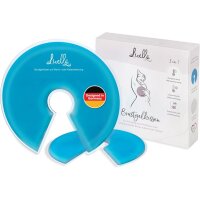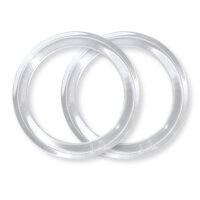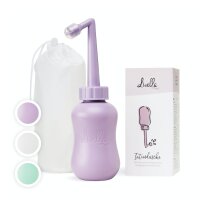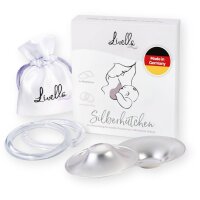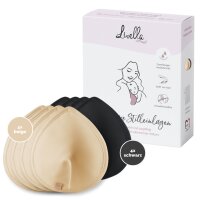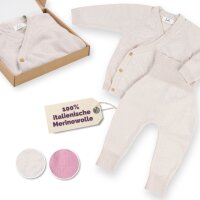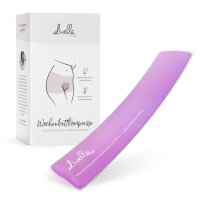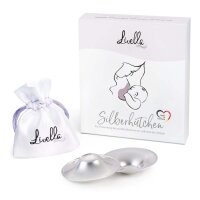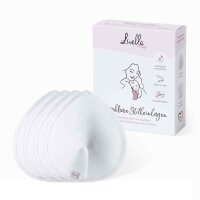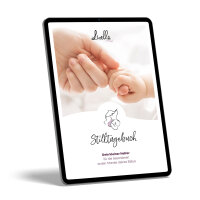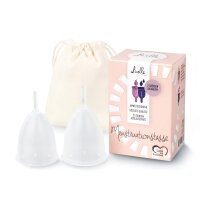Finally, the long wait is over. You have made it through birth and are holding your newborn in your arms for the first time. But when is it time for the first breastfeeding session?
Most new mothers have lots of questions about when, where and how to start breastfeeding. What to expect the first few days of breastfeeding? What challenges should young mums prepare for? And does breastfeeding hurt in the first few days? Read the answers here.
Table of contents
Starting breastfeeding on the first day is key
How often should you breastfeed in the first few days?
Breastfeeding in the first few days: what about milk supply?
Breastfeeding the first few days: pain and potential problems
The first few days of breastfeeding: the best tips for new mums
Breastfeeding in the first few days: the importance of a healthy diet
A final word on the first few days of breastfeeding
Starting breastfeeding on the first day is key
Many mothers wonder when the first breastfeeding after birth should take place. Ideally, your newborn should get the chance to breastfeed within the first hour after birth. That’s why it's important that the two of you get some private time together.
Breastfeeding within the first 24 hours isn’t always possible due to complications during birth. But even in such cases, the rule is: The earlier a newborn is put to the breast for the first time, the better the chances of getting breastfeeding off to a good start. If the start of breastfeeding is delayed, you should express some of your colostrum by hand and feed it to your baby with a spoon or a syringe as soon as you can.
The best position for breastfeeding in the first few days is laid-back nursing. In this position, you have your baby lying on your tummy from where he or she can move towards the breast and latch on independently. When breastfeeding after a C-section, you can modify the position to have your baby positioned sideways on your breast to prevent him or her from kicking your fresh scar.

How often should you breastfeed in the first few days?
The first priority for new mums is to ensure that their baby is well-fed and gets all the nutrients he or she needs. One of the most pressing issues for young mothers therefore is to know how often their newborn needs breastfeeding in the first few days.
In the first 24 hours, you should feed your baby eight to twelve times. This means that a feeding session is due every two to three hours. Most experts recommend that two consecutive feedings should not be more than four hours apart—not even at night. Sticking to this schedule will help you successfully establish your milk production and prevent problems with low milk supply further down the line.
Breastfeeding in the first few days: what about milk supply?
During the first few days of breastfeeding, you will notice that your breast milk is very thick and yellowish in colour. The first milk your body produces after birth is called colostrum. It is usually produced during the first 24 to 48 hours of your baby’s life.
The colostrum is particularly rich in nutrients, which means that even very small amounts are enough to keep your baby well-nourished. In addition to being very nutritious, it contains many important immune components and antibodies that your baby needs for healthy development.
After the first few days of breastfeeding, your body gradually replaces the colostrum with mature milk. This is also when your body begins to make more milk, which is why this process is commonly referred to as your “milk coming in”. During this time, it’s not uncommon for the mother’s breasts to feel uncomfortably full.
Breastfeeding the first few days: pain and potential problems
New mothers often wonder: Should breastfeeding hurt in the first few days? The answer is ‘no’. Breastfeeding shouldn’t hurt. However, it is not uncommon for young mums to feel uncomfortable when they first start breastfeeding. That’s because it takes time for your nipples to get used to your baby’s sucking.
If you experience severe pain when breastfeeding in the first week, you should find out what causes it. Continuous breastfeeding pain can be very discouraging and even lead to premature weaning.
Pain during breastfeeding is not normal, but you may still face some problems in the first days of breastfeeding. Common problems include:
- Bad latch-on technique: A good breastfeeding latch is essential for successful breastfeeding and helps prevent a whole range of breastfeeding problems. Only when your baby is latched on correctly can he or she suck effectively at the breast and drain it properly.
- Sore nipples: Sore nipples are a common struggle in the first days of breastfeeding. They are often caused by poor positioning or a bad latch. If your newborn isn’t latched on properly, he or she will squeeze your nipples when breastfeeding, which leads to nipple soreness in the long run.
- Clogged milk ducts: If your milk ducts don’t get emptied properly during breastfeeding, they can clog up. Blocked milk ducts can already be a problem in the early days of breastfeeding if your baby isn’t latched on correctly, if your body is slow to adapt milk supply to your baby’s actual needs, or if your let-down reflex is malfunctioning. If left untreated, blocked ducts can even lead to mastitis.
- Too much or too little breast milk: One common concern among new mums is that their milk supply might be too low to nourish their baby. In some cases, young mothers are worried about breast milk oversupply when they see their baby struggle with a strong milk flow during breastfeeding in the first few days. In both cases, you should know that the body needs some time to regulate your milk supply and adapt it to your baby’s needs.
- Initial breast engorgement: When your body starts producing mature milk, your milk supply rapidly increases, which can lead to tightness and swelling of your breasts. However, the uncomfortable feeling usually disappears after a couple of days.
The first few days of breastfeeding: the best tips for new mums
It’s important to pay close attention to your breastfeeding technique to avoid developing bad habits that could lead to problems in the long run. Here are some practical tips for getting breastfeeding off to a good start:
- Be well-prepared: Even if breastfeeding doesn’t come naturally to you, you can enhance your chances of success with thorough preparation. Preparing for breastfeeding includes attending breastfeeding classes, choosing a baby-friendly hospital and making plans for breastfeeding when returning to work.
- Get the necessary breastfeeding accessories: The choice of accessories you can buy for breastfeeding can be overwhelming. With all the different products to choose from, it can be hard to know which ones you really need. Breastfeeding essentials include a breastfeeding pillow, silver nursing cups for soothing sore nipples, breast gel pads for hot and cold therapy, and a cosy baby blanket. You might even be able to buy them as a practical breastfeeding set.
- Allow plenty of skin-to-skin contact: Direct skin-to-skin contact between you and your baby is important to activate your baby's natural reflexes and trigger the processes in your body that are needed for let-down.
- Keep checking your breastfeeding latch: During the first few days of breastfeeding, you should pay close attention to your breastfeeding latch. Check if your baby’s mouth is wide open and if the lips are rolled outwards. Also, make sure that your newborn doesn’t need to turn his or her head to drink.
- Recognise early signs of hunger: Latching your baby on is a lot easier and less painful when you don’t leave it to the last minute. Early signs that your baby is ready for a feed include smacking or licking of the lips, making sucking movements with the mouth, sucking on the hand, and searching movements with the head.

Breastfeeding in the first few days: the importance of a healthy diet
Eating a healthy diet is not only important during pregnancy, but also during breastfeeding. A nutritious breastfeeding diet keeps you fit and healthy and ensures that your body's increased nutritional needs during breastfeeding are met.
Also, your diet and the quality of your milk are interrelated. Although your food intake does not affect the primary composition of your breast milk per se, it largely influences the levels of different micronutrients, such as iodine, selenium, and vitamins A, B2, B6 and B12, in the milk. Your body’s increased need for iodine during breastfeeding is best met with an appropriate dietary supplement for breastfeeding mums.
A healthy diet during breastfeeding includes dairy foods, wholemeal products, fruit and vegetables, lean meat, sea fish and plenty of fluids. If you want to increase your milk supply, you can drink unsweetened breastfeeding tea. Alcohol, spicy foods, and large amounts of caffeine, on the other hand, are best avoided during breastfeeding.
Get detailed guidance on what foods to include in your healthy breastfeeding diet in this blog post.
A final word on the first few days of breastfeeding
In the first few days, breastfeeding can be challenging. After all, you and your baby first need to get the hang of breastfeeding before it becomes a comfortable routine. One of the most important things for getting breastfeeding off to a good start is to have the first breastfeeding session as early as possible. Ideally, the first feeding should take place right after birth.
After that, it’s recommended to breastfeed every two to three hours and allow for plenty of skin-to-skin contact to get your milk production going. Get a midwife or lactation consultant to check your breastfeeding latch and positioning to avoid getting into bad habits that can lead to problems with milk supply, blocked ducts, or sore nipples.
References
- Ernährung der Mutter während der Stillzeit » Stillen » Schwangerschaft & Geburt » Frauenärzte im Netz - Ihr Portal für Frauengesundheit und Frauenheilkunde » (frauenaerzte-im-netz.de)
- Ernährung der Mutter in der Stillzeit (stillen-institut.com)
- Erstes Stillen nach der Geburt - Still-Lexikon
- Milchbildung in den ersten Tagen nach der Geburt - Still-Lexikon
- Wie oft müssen Säuglinge gestillt werden?- Gesund ins Leben (gesund-ins-leben.de)
- 180629_DHV_Flyer_Stillen-in-den-ersten-Tagen_web.pdf (hebammen-niedersachsen.de)
- Stillbeginn - familienplanung.de


